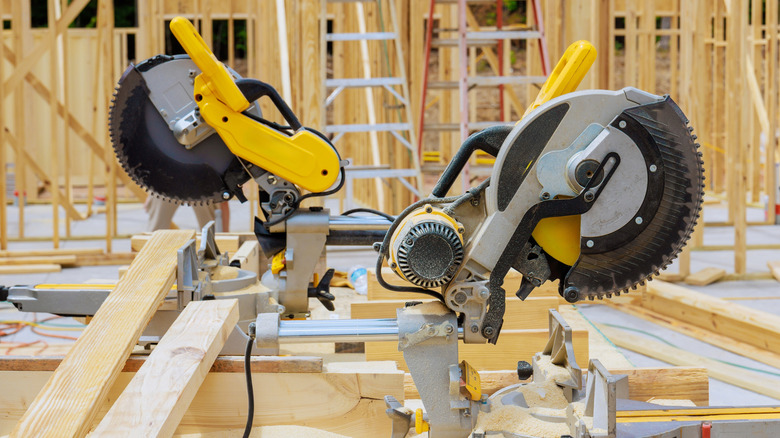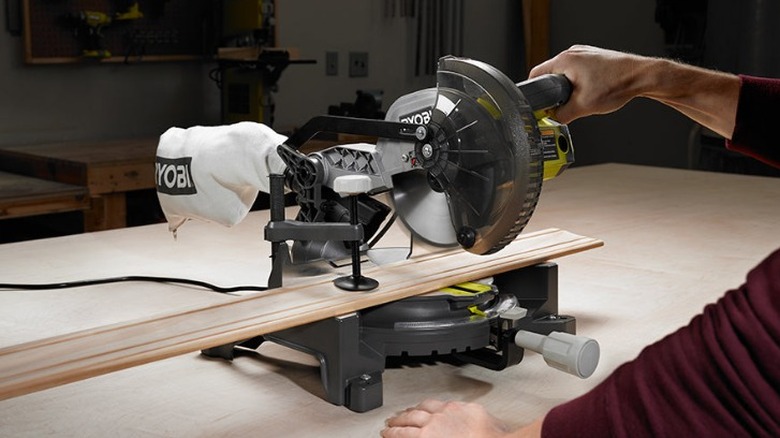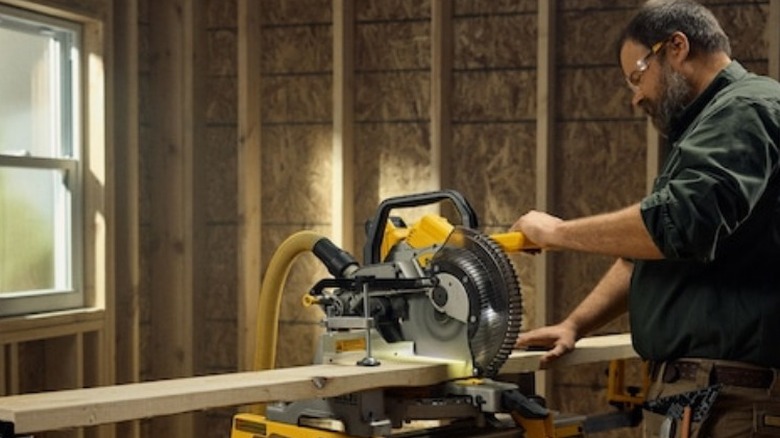
A quality miter saw makes for an excellent addition to any woodworking shop. You might find yourself gravitating toward a tablesaw for more fine woodworking tasks, but nothing beats a miter saw when it comes to being able to quickly and easily cut boards to length. But choosing the right miter saw for your shop can be confusing. There are a lot of different models out there with various features, and the terms used to describe these features aren't always clearly defined for those who aren't familiar
with woodworking lingo. For instance, one of the major decisions that you'll have to make when purchasing a miter saw is whether you'll get one of the more affordable single-bevel models or one of the pricier double-bevel ones.
For those who are unfamiliar, most miter saws can be rotated in two directions: Rotation on the horizontal axis allows woodworkers to make mitered cuts across the face of a board, rotation along the vertical axis allows users to make beveled cuts through the end grain of a board, and rotation on both axes at the same time allows them to both, creating something called a compound cut.
Some miter saws are advertised as being 'single-bevel,' while others are referred to as being 'double-bevel.' Both start out at a 90-degree angle from the cutting surface, but single-bevel saws are only able to rotate in one direction along the vertical axis (usually to the left), while double-bevel saws can rotate in both.
Read more: 7 Harbor Freight Icon Tools That Are Worth Buying (And 3 To Avoid)
Single-Bevel Is Sufficient For Most Users

Having vertical rotation limited to a single direction might make single-bevel saws seem quite limiting, but the loss in utility is actually fairly minimal. Most major power tool brands have both single and double-bevel saws available in their catalog. This is because, in most instances, the humble single-bevel miter saw is able to make all of the same kinds of cuts that a double-bevel saw can. It just takes a little bit more preparation before the cuts to ensure that they are properly executed.
For example, say you want to make a 45-degree bevel cut on both sides of a board in opposite directions, with one side angled toward one face of the board and the other side angled toward the opposite face. All you would need to do in that situation is flip the board and turn it around before making the second cut. Turning the board allows you to reverse the angle of the cut without the need for changing the position of the blade. In fact, some might argue that this makes it easier to maintain accuracy, since keeping the saw in a single position reduces the possibility of accidentally misaligning the saw. It also means that you will always be cutting from a single direction, thus reducing the risk of accidentally starting a cut from the wrong side of the angle. This, coupled with their tendency to be more affordable, makes single-bevel miter saws the more practical option for most DIYers and beginner woodworkers.
Double-Bevel Is Useful For Pros

While it's true that most craftspeople will be able to get by just fine on a single-bevel miter saw, there are certainly a few situations where having the extra mobility of something like the Makita LS1219L or the DeWalt DWS779 and DWS780 can be useful. Pros who spend a lot of time working with trim and crown molding are probably the biggest examples. These people might find that it's worth the extra price to pick up a double-bevel saw. These materials require dozens of angled cuts that all need to be made to the measurements of a room's walls, and many of them involve cutting lengths of trim that are well over 10 feet long, which might not be easy to flip around inside a house.
Being able to easily move the angle of the saw blade itself may also be faster and more time-efficient, particularly when dealing with more complex compound cuts. People who specialize in cabinetry or furniture building may also prefer a double-bevel saw for similar reasons. There are multiple occasions when flipping a large piece to make a cut is impractical, and having the ability to rotate the blade in both directions can be a huge boon. That said, there is nothing stopping anyone who is willing to pay the price from adding a double-bevel saw to their shop simply for the sake of convenience.
Want the latest in tech and auto trends? Subscribe to our free newsletter for the latest headlines, expert guides, and how-to tips, one email at a time.
Read the original article on SlashGear.










